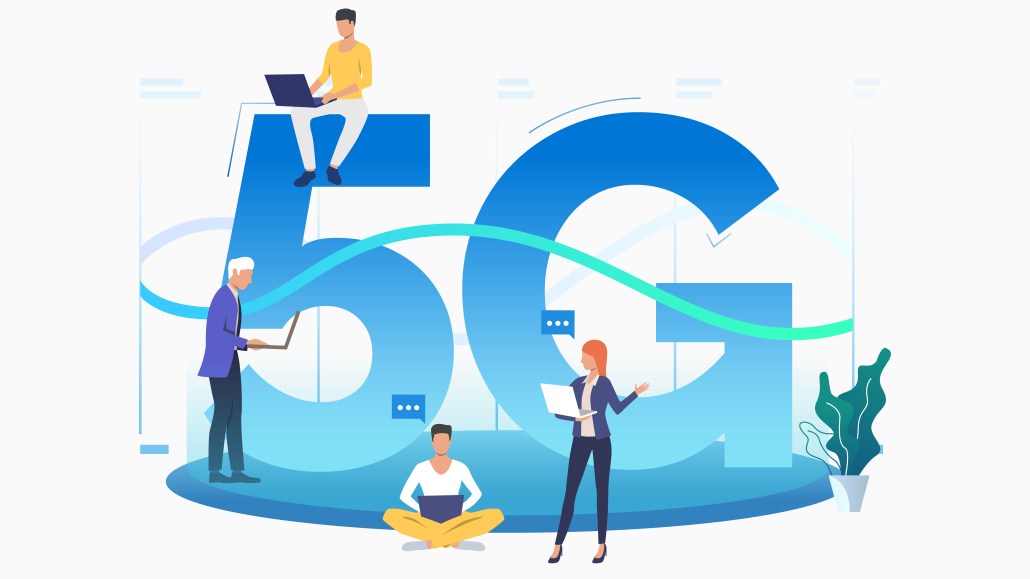How 5G and immersive experiences are changing live event participation

By Mark Melling, head of RYOT Studio EMEA, 5G lead EMEA and LATAM
Live events certainly took a hit, to put it mildly, as a result of COVID-19. Concerts, conferences and games — the hallmarks of thriving global business and entertainment industries — were delayed for months at best, only reopening in some cases as attendee-less versions of their former sold-out selves.
The worldwide pause and social distancing guidelines forced industries to adapt, recontextualizing live events in virtual environments through digital platforms. This is especially relevant now as new research indicates excitement around “digital twins” — in which a live physical event features a simultaneous virtual event, doubling as an option for consumers to attend instead. A recent Verizon Media online study — ‘5G and Immersive Experiences,’ which surveyed 2,000 nationally representative adults — found that 75 percent of UK adults were interested in a digital alternative to a variety of traditionally live events such as conferences, cooking classes, fashion shows, new film releases and live sports.
Thanks to advances in immersive technology, virtual experiences can bring audiences closer than ever to simulating the real thing. Research shows that 69 percent of UK consumers are excited by VR/AR experiences, an increase of 19 percentage points since March of just this year (up from 50 percent). Immersive technology is gaining broad appeal and entering the mainstream, with the introduction of 5G networks coming along at the ideal time to infuse new and exciting opportunities into events both right now and well into the future.
Virtual events as they stand today
For the vast majority of event types, consumers indicate they’re still not quite comfortable attending in person. That’s not doom-and-gloom news for traditional event organizers, however. Rather, it provides an excellent opportunity to develop digital twin experiences that reach potential attendees looking to replicate the sense of community and entertainment they get from their favorite events.
Accessibility and the ability to connect are two of the biggest factors explaining the popularity of digital alternatives, with 35 percent of adults saying they’d be more likely to attend online as a way to socialize with friends and family. Consumers passionate about attending live events and concerts in person aren’t disappointed about the transition to virtual – in fact, these groups specifically are more excited than the average consumer about the prospect of attending an event in a digital arena.
In addition to the obvious cost and environmental advantages of organizing digital events, the metrics used to measure success are evolving in new and interesting ways as well. Virtual events are rewriting the KPI handbook on indicators like novelty, audience satisfaction and reach as audiences change the ways they engage with their favorite artists, athletes and performers — as well as each other — for good.
Conference production companies, in particular, have had to reinvent themselves in 2020, and will only continue to improve their offerings over time. Sophisticated features like virtual reality, augmented reality and holographic projection, connected via 5G, will allow attendees to engage in exciting, interactive ways not limited by time, space and audio technology constraints of the physical environment.
5G connectivity makes for a future where nothing is impossible.
Mobile networks will be critical in ensuring a seamlessly connected future. Enter 5G. Here are just a few of the advantages this new frontier of connectivity will provide:
1. Enhanced experiences: Don’t think of what’s missing in virtual events compared to their real-life counterparts. Instead, consider what’s possible in virtual settings that could never be duplicated in person. 5G will bring to life exotic VR settings, special effects and interaction on a scale never before seen. At our recent collaboration with the London School of Fashion, 81 percent of respondents were more likely to purchase from brands that featured VR.
2. Reach: The whole world is now on the event’s guest list. Brands sponsoring performances, teams and games will have no limitations to how far their message can reach.
3. Monetization: Over half of UK consumers 18–24 are more receptive to brands that connect with them in creative ways, according to our research. We’re only scratching the surface of how successful brands can be when they deliver innovation within the context of engaging virtual experiences.
Empowering attendees to create their own event connections
The world is becoming more virtual by the day, and will likely stay that way even as concert halls, event spaces and stadiums eventually re-open. Collective online experiences are poised to further distinguish themselves from traditional events as they become more accessible and offer more customization and connection. Truly connecting with an audience demands an impactful digital plan, and now is the time to put it in motion.
More from Digiday

Agencies create specialist units to help marketers’ solve for AI search gatekeepers
Wpromote, Kepler and Jellyfish practices aim to illuminate impact of black box LLMs’ understanding of brands search and social efforts.

What AI startup Cluely gets — and ad tech forgets — about attention
Cluely launched a narrative before it launched a tool. And somehow, it’s working.

Media Briefing: ‘Cloudflare is locking the door’: Publishers celebrate victory against AI bot crawlers
After years of miserably watching their content get ransacked for free by millions of unidentified AI bot crawlers, publishers were finally thrown a viable lifeline.





